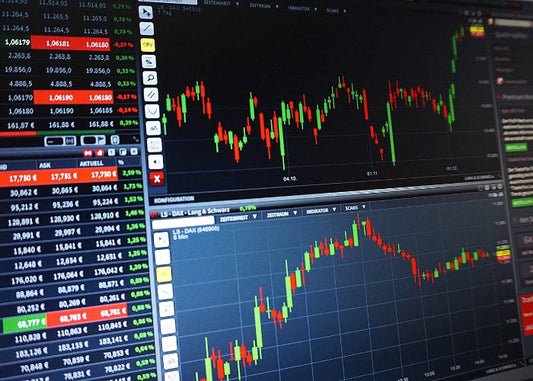Weekly Outlook: 27 May – 31 May 2024

UPCOMING EVENTS:
• Monday: UK/US Holidays, German IFO.
• Tuesday: Australia Retail Sales, Canada PPI, US Consumer Confidence.
• Wednesday: Australia Monthly CPI, Fed Beige Book.
• Thursday: Switzerland GDP, Eurozone Unemployment Rate, US GDP 2nd Estimate, US Jobless Claims.
• Friday: Tokyo CPI, Japan Retail Sales and Industrial Production, China PMIs, Switzerland Retail Sales, Switzerland Manufacturing PMI, Eurozone Flash CPI, Canada GDP, US PCE
AUSTRALIA CPI (WED):
The anticipated Weighted CPI for April in Australia is projected to slightly decrease to 3.4% Y/Y from the previous 3.5%, with expectations ranging from 3.2% to 3.5%. This follows a previous month where the CPI unexpectedly hit 3.5%, primarily driven by a sharp increase in electricity prices as government power rebates concluded. For the upcoming April data, Westpac analysts forecast that the CPI will remain at the previous month’s level of 3.5%, citing potential upside risks. They highlight uncertainty regarding the extent of electricity price hikes post-rebate and note that the Australian Bureau of Statistics (ABS) seasonal factors suggest an expected seasonal rise of about 0.6% for April. This would imply a nearly flat result when adjusted for seasonal variations. From a policy perspective, the Reserve Bank of Australia (RBA)'s recent minutes from its May meeting indicated a deliberation on whether to increase rates, though the decision was to maintain the current policy. The RBA noted the challenging balance between managing inflation expectations and economic growth, expressing concerns about inflation potentially remaining above the target longer than anticipated, which underscores their cautious approach to future rate adjustments. This ongoing vigilance highlights the RBA’s focus on ensuring inflation converges back to its target range without precipitating undue economic strain.
JAPAN TOKYO CPI (FRI)
The Tokyo CPI metrics, though not forecasted for this period, are closely watched as indicators of broader inflation trends in Japan. Last month's Tokyo headline CPI was reported at 1.8% year over-year, with Core CPI at 1.6%. Analysts from ING anticipate an increase to 2.2% year-over-year from 1.8%, attributing the expected rise to the cessation of a free education program that impacted the April figures. From the Bank of Japan's (BoJ) standpoint, the focus remains on the underlying inflation trend. Governor Ueda has expressed optimism about an auto output recovery starting in the second quarter, and a continued easing of cost-push inflation, which is expected to bolster consumption. Furthermore, a recent Reuters poll highlights shifting expectations around the BoJ's monetary policy. It suggests that 63% of economists predict the BoJ will begin scaling back its bond purchases by the end of July. Additionally, there is a growing consensus (88% of economists) expecting the BoJ to raise interest rates to at least 0.2% by the year's end—a significant increase from 65% in the April poll. Concerning currency intervention, 73% of economists anticipate that Japan might step in to prevent further weakening of the yen, especially if it approaches 160 per dollar. These developments underscore the dynamic and evolving nature of Japan's economic policy landscape, with significant implications for inflation and currency stability.
EUROZONE FLASH CPI (FRI):
If the headline CPI indeed rises to 2.5% year-over-year from 2.4%, as expected, this slight increase could be influenced by the continuing rise in food prices and a smaller-than-expected reduction in energy inflation. The stability of the super-core metric at 2.7% year-over-year, down from earlier levels, suggests that underlying inflation pressures, particularly from services, are moderating somewhat. ING's observation that the headline inflation might tick up due to energy prices is crucial, especially when paired with relatively stable core inflation developments. This scenario highlights the complex interplay between different inflation components and the broader economic conditions affecting price levels.
A potential hotter-than-expected inflation reading could provoke a rethink in market expectations regarding the European Central Bank’s (ECB) monetary policy path, especially considering the recent firmer-than-expected wage data and robust PMI figures. While a June rate cut by the ECB appears almost certain, a surprise in inflation data might influence market sentiment and expectations about the extent and pace of further monetary policy easing throughout the year. Currently, market expectations for rate cuts by year-end have been scaled back to 55 basis points from around 70 basis points at the time of the last ECB meeting, indicating a more cautious outlook on the easing cycle. This adjustment reflects a market that is sensitive to inflation signals and ECB communication, highlighting the delicate balance the central bank must manage in its policy decisions.
US PCE (FRI):
The expectations for the Personal Consumption Expenditures (PCE) price index suggest that
inflationary pressures remain persistent, with both headline and core measures expected to
mirror the previous month’s growth rates. The April PCE data will be pivotal for Federal Reserve policymakers, who are balancing the recent cooler-than-expected CPI data against a surprising uptick in the Producer Price Index (PPI), especially in components influential to the PCE metrics. Goldman Sachs's analysis, pointing to a slower rise in core PCE than in previous months, underlines a critical observation that might influence the Fed's upcoming decisions. The distinction made by Fed Chair Powell regarding the market-based core PCE index is particularly noteworthy, as a lower increase supports the potential for a rate cut later in the year if such trends persist.
The broader market's reaction to recent Fed communications and economic indicators reflects a recalibration of expectations regarding the timing of rate cuts. The sharp reduction in rate cut expectations for the Fed’s June and July meetings underscores the market's sensitivity to both Fed rhetoric and economic data nuances. The predominant expectation now places the first fully anticipated rate cut in December, with a strong likelihood as early as November. This environment highlights the ongoing uncertainty and the critical role upcoming economic data will play in shaping monetary policy expectations. The Fed’s cautious approach, emphasized in recent minutes and statements, suggests that decision-makers are keenly observing data trends to determine the right timing for adjusting the policy rate.
Disclaimer: This material is provided for informational purposes only and does not constitute financial, investment or other advice. No opinion contained in this material constitutes a recommendation by Trive International or its author as to any particular investment, transaction or investment strategy and should not be relied upon in making any investment decision. In particular, the information does not consider the individual investment objectives or financial circumstances of the individual investor Trive International shall not be liable for any loss, damage or injury arising from the use of this information. Trive International may or may not be able to provide equity in the companies. The value of your investment may go down as well as up.
No comments
Home
Trive
TriveHub





0 comments